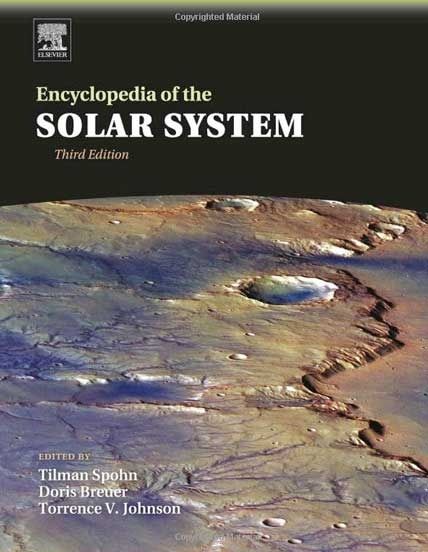
Long before Galileo published his discoveries about Jupiter, lunar craters, and the Milky Way in the Starry Messenger in 1610, people were fascinated with the planets and stars around them. That interest continues today, and scientists are making new discoveries at an astounding rate. Ancient lake beds on Mars, robotic spacecraft missions, and new definitions of planets now dominate the news. How can you take it all in?
Start with the new Encyclopedia of the Solar System, Second Edition. This self-contained reference follows the trail blazed by the bestselling first edition. It provides a framework for understanding the origin and evolution of the solar system, historical discoveries, and details about planetary bodies and how they interact . It stands alone as the definitive work in this field, and will serve as a modern messenger of scientific discovery and provide a look into the future of our solar system. Long before Galileo published his discoveries about Jupiter, lunar craters, and the Milky Way in the Starry Messenger in 1610, people were fascinated with the planets and stars around them. That interest continues today, and scientists are making new discoveries at an astounding rate. Ancient lake beds on Mars, robotic spacecraft missions, and new definitions of planets now dominate the news. How can you take it all in? Start with the new Encyclopedia of the Solar System, Second Edition. This self-contained reference follows the trail blazed by the bestselling first edition. It provides a framework for understanding the origin and evolution of the solar system, historical discoveries, and details about planetary bodies and how they interact . It stands alone as the definitive work in this field, and will serve as a modern messenger of scientific discovery and provide a look into the future of our solar system.
The Encyclopedia of the Solar System, third edition provides a framework for understanding the origin and evolution of the solar system, historical discoveries, and details about planetary bodies and how they interact-with an astounding breadth of content and breathtaking visual impact. The encyclopedia includes the latest explorations and observations, hundreds of color digital images and illustrations, and over 1,000 pages. It stands alone as the definitive work in this field, and will serve as a modern messenger of scientific discovery and provide a look into the future of our solar system.
New additions to the third edition will reflect the latest progress and growth in the field, including past and present space missions to the terrestrial planets, the outer solar systems and space telescopes used to detect extrasolar planets.
Presents 700 full-color digital images and diagrams from current space missions and observatories, bringing to life the content and aiding in the understanding and retention of key concepts.
Includes a substantial appendix containing data on planetary missions, fundamental data of relevance for planets and satellites, and a glossary, providing immediately accessible mission data for ease of use in conducting further research or for use in presentations and instruction.
Contains an extensive bibliography, providing a guide for deeper studies into broader aspects of the field and serving as an excellent entry point for graduate students aiming to broaden their study of planetary science.
http://www.rarefile.net/ftx640vhnsiu/Enc.SolarSystem.part1.rar
http://www.rarefile.net/f26ijjlzm65e/Enc.SolarSystem.part2.rar
.

















0 Response to this entry.